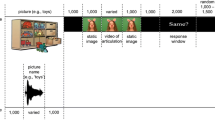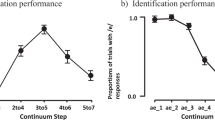Abstract
The effect of increased concentrations of ambient negative air ions on incidental visual memory for words and purposive auditory memory for dichotic digits was investigated in 20 normal grade 4 children, 8 learning-disabled children, and 8 mildly mentally retarded children. Half in each group were assigned randomly to an unmodified air-placebo condition under double-blind testing procedures. All of the children breathing negatively ionized air were superior in incidental memory. In dichotic listening, the negative ions produced a counter-priming effect in the two learning-impaired groups, offsetting the difficulties that they showed under placebo in switching attention selectively from one ear to the other. The action of negative ions on the neurotransmitter, serotonin, may be the mechanism by which negative ions produce such behavioral effects. In view of the important environmental and remedial implications of these novel findings, interpretations should be made cautiously pending larger scale replications.
Similar content being viewed by others
References
Chase, T. M. (1974). Serotonergic-dopaminergic interactions and extrapyramidal function.Advances in Biochemical Psychopharmacology, 11, 377–385.
Craik, F., & Lockhart, R. (1972). Levels of processing: A framework for memory research.Journal of Verbal Learning and Verbal Behaviour, 671–684.
Diamond, M. C., Conner, Jr., J. R., Orenburg, E. K., Bissell, M., Yost, M., & Kreuger, A. (1980). Environmental influences on serotonin and cyclic nucleotides in rat cerebral cortex.Science, 210, 652–654.
Duffee, R. A., & Koontz, R. H. (1965). Behavioral effects of ionized air on rats.Pyschophysiology, 1, 347–359.
Eckert, E., & Kanak, N. (1974). Verbal discrimination learning: A review of the acquisition, transfer, and retention literature through 1972.Psychological Bulletin, 81, 582–607.
Ekstrand, B., Wallace, W., & Underwood, B. (1966). A frequency theory of verbal-discrimination learning.Psychological Review, 6, 566–578.
Essman, W. B. (1974). Brain 5-hydroxytryptamine and memory consolidation.Advances in Biochemical Psychopharmacology, 11, 265–274.
Fisher, M. A., & Zeman, D. (1973). An attention-retention theory of retardate discrimination learning. In N. R. Ellis (Ed.),International review of research in mental retardation (Vol. 6, pp. 117–140). New York: Academic Press.
Geller, E., Ritvo, E. R., Freeman, B. J., & Yuwiler, A. (1982). A preliminary observation on the effect of fenfluramine on blood serotonin and symptoms in three autistic boys.New England Journal of Medicine, 307, 165–169.
Goldman, J. D., Thibert, R. J., & Rourke, B. P. (1979). Platelet serotonin levels in hyperactive children.Journal of Pediatric Psychology, 4, 285–296.
Hanley, H. G., Stahl, S. M., & Freedman, D. X. (1977) Hyperserotonemia and amine metabolites in autistic and retarded children.Archives of General Psychiatry, 34, 521–531.
Henninger, P., Kershner, J., & Cooke, W. (1981, March).Spatial constraints induce a right hemisphere linguistic advantage in learning disabled children. Paper presented at the Canac Canadian Child in the Eighties Conference, Mount Saint Vincent University, Halifax, Nova Scotia.
Hiscock, M., & Kinsbourne, M. (1980). Asymmetries of selective listening and attention switching in children.Developmental Psychology, 16, 70–82.
Hynd, G. W., Obrzut, J. E., Weed, W., & Hynd, G. R. (1979) Development of cerebral dominance: Dichotic listening asymmetry in normal and learning disabled children.Journal of Experimental Child Psychology, 28, 445–454.
Irwin, M., Belendiuk, K., McCloskey, K., & Freedman, D. X. (1981).Tryptophan metabolism in children with attention deficit disorder.American Journal of Psychiatry, 138, 1085.
Jordan, J., & Sokoloff, B. (1959). Air ionization, age, and maze learning of rats.Journal of Gerontology, 14, 344–348.
Kershner, J. (1982). Relationship of hemispheric specialization to complex reasoning skills.International Journal of Neuroscience, 17, 60–61.
Kershner, J. (in press). Ontogeny of hemispheric specialization and relationship of developmental patterns to complex reasoning skills and academic achievement. In C. T. Best (Ed.),Developmental neuropsychology and education: Hemispheric specialization and integration New York: Academic Press.
Kokkinidis, L., & Anisman, H. (1980). Amphetamine models of paranoid schizophrenia: An overview and elaboration of animal experimentation.Psychological Bulletin, 88, 551–579.
Kotaka, S. (1978). Effects of air ions on microorganisms and other biological materials.CRC Critical Reviews in Microbiology, 6, 109–149.
Kreuger, A. P., & Reed, E. J. (1976). Biological impact of small air ions.Science, 193, 1209–1213.
La Manna, J. C., Harik, S. I., Light, A. I., & Rosenthal, M. (1981). Norepinephrine depletion alters cerebral oxidative metabolism in the active state.Brain Research, 204, 87–101.
Libkuman, T. (1982). Word frequency and the intentional-incidental verbal-discrimination learning of nonretarded and mentally retarded individuals.Journal of Mental Deficiency, 87, 80–85.
McLaren, D., Kershner, J., & Hunnisett, P. (1981, March).Biometeorological effects on memory in hyperactive children. Paper presented at the Canadian Child in the Eighties Conference, Mount Saint Vincent University, Halifax, Nova Scotia.
Obrzut, J. E., Hynd, G. W., Obrzut, A., & Pirozzolo, F. J. (1981). Effect of directed attention on cerebral asymmetries in normal and learning disabled children.Developmental Psychology, 17, 118–125.
Oikawa, K., Deonauth, J., Breidbart, S. (1979). Mental retardation and elevated serotonin levels in adults.Life Science, 23, 45–48.
Peters, R. I., & Meyers, K. M. (1980). Serotonergic-catecholaminergic antagonism and locomotor control.Experimental Neurology, 69, 22–29.
Pribram, K., & McGuinness, D. (1975). Arousal, activation, and effort in the control of attention.Psychological Review, 82, 116–149.
Rogawski, M. A., & Aghajanian, G. K. (1980). Norepinephrine and serotonin: Opposite effects on the activity of lateral geniculate neurons evoked by optic pathway stimulation.Experimental Neurology, 69, 678–694.
Samanin, R., & Garratini, S. (1975). The serotonergic system in the brain and its possible functional connections with other aminergic systems.Life Sciences, 17, 1201–1210.
Silverman, D., & Kornbluth, I. H. (1957). Effect of artificial ionization of the air on the electroencephalogram.American Journal of Physical Medicine, 36, 352–358.
Sulman, F. G., Levy, A., Pfeifer, Y., Superstine, E., & Tal, E. (1974). Airionometry of hot, dry desert winds (Sharav) and treatment with air ions of weather-sensitive subjects.International Journal of Biometeorology, 18, 313–318.
Author information
Authors and Affiliations
Additional information
This research was supported by a grant from the Ontario Institute for Studies in Education. We wish to thank Paul Hunnisett, who was the first person to our knowledge to suggest that negative ions may have an effect on children's behavior. We also thank Dave Patterson, superintendent of Special Services with the Northumberland and Newcastle Board of Education, for supporting this study, and Muriel Fung, OISE, for assistance with the data analysis.
Rights and permissions
About this article
Cite this article
Morton, L.L., Kershner, J.R. Negative air ionization improves memory and attention in learning-disabled and mentally retarded children. J Abnorm Child Psychol 12, 353–365 (1984). https://doi.org/10.1007/BF00910673
Revised:
Issue Date:
DOI: https://doi.org/10.1007/BF00910673




